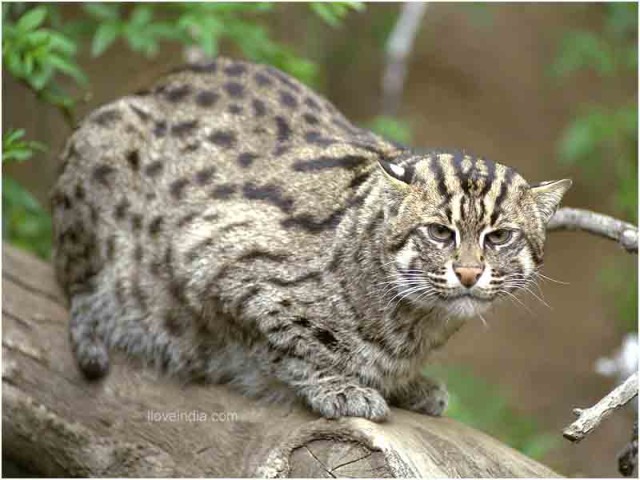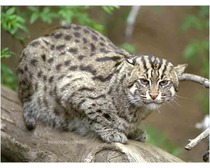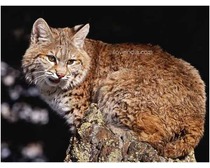This stout-bodied Bobcat is a North American mammal of the cat family Felidae and is quite cool in its nature. Explore some interesting facts & amazing information on Bobcats, given in this article.
Facts About Bobcat
Bobcats (Lynx rufus) are both mysterious and nocturnal in nature, hence difficult to be spotted by humans. They roam through much of North America and adapt well to their surroundings. Often called wild cats, they are twice as big as housecats. Like most cats, bobcats are territorial in nature and largely solitary, although there might be some overlap in their home ranges. They are fierce hunters and use several methods to mark their territorial boundaries, including claw marks and deposits of urine. Currently, the species is found in Continental United States, from Southern Canada to Northern Mexico. Bobcat usually inhabits wooden areas, semi-desert, forest edge, urban edge and swampland environments. To get some more interesting facts and amazing information on bobcats, read the pointers given below.

Facts About Bobcat
Binomial Name: Lynux rufus
Kingdom: Animalia
Phylum: Chordata
Subphylum: Vertebrata
Class: Mammalia
Order: Carnivora
Family: Felidae
Genus: Lynx
Species: L rufus
Subspecies: 12
Length: 26 to 41 in (66 to 104 cm)
Tail Length: 4 to 7 in (10 to 18 cm)
Weight: 16 to 30 pounds (7.3 to 14 kg) [male]; 20 pounds (9.1 kg) [female]
Life Span: 10 to 12 years
Diet: Rabbits, birds, mice, squirrel
Range: Continental United States from Southern Canada to Northern Mexico
Habitat: Wooden area, semi-desert, urban edge, swampland environments, forest edge
Age of Sexual Maturity: 1 to 2 years
Gestation Period: About 2 months
Number of Offspring: One to six kittens
Interesting & Amazing Information On Bobcats
- Bobcats got their name from their tail, which appears to be cut or bobbed.
- This species has the greatest range of all native North American cats.
- Twelve subspecies of Bobcats are currently recognized in North America, though not by consenses. They are - L. rufus rufus (Schreber), L. rufus gigas (Bangs), L. rufus floridanus (Rafinesque), L. rufus superiorensis (Peterson & Downing), L. rufus baileyi (Merriam), L. rufus californicus (Mearns), L. rufus escuinipae (J. A. Allen), L. rufus fasciatus (Rafinesque), L. rufus oaxacensis (Goodwin), L. rufus pallescens (Merriam), L. rufus peninsularis (Thomas) and L. rufus texensis (Mearns).
- Bobcats represent the smallest of the four species in the ‘Lynx’ genus.
- Bobcats are often mistaken as mountain lion, when they roar, as their roar is both rough and deep.
- This species is made distinctive by the black streaks on the body, pointed and black tipped ears and short black tuffs.
- The coat color of Bobcats varies from tan to grayish brown. The ones living in southwest desert region have light colored coats, while those in northern forest region are the darkest.
- Bobcats are excellent swimmers and can walk as much as 25 miles in a day. They usually live in caves.
- If a bobcat enters a territory that you do not want it to be in, give it food and it will walk away.
- Bobcats are born blind and weigh up to 4 to 8 ounces. The kittens are born well furred and have spots that can vary in shape and design.
- The colder the climate is, the bigger would be the bobcats in that area.
- A special permit is required to keep bobcats as pets.
- Bobcat tracks are very easily distinguished with a round shape, four toes and no claws that show.
- Bobcats are excellent swimmers, very good climbers, have a good vision and can hunt well, but they find it difficult to chase.
- This species is the most active after dusk and before dawn.
- Bobcats’ activities confine to well-defined territories, depending on the gender and distribution of prey.
- This species has been categorized under the ‘Least Concerned Species’, by the World Conservation Union. However, hunting for their skin is discouraged.


See also
More from iloveindia.com
- Home Remedies | Ayurveda | Vastu | Yoga | Feng Shui | Tattoos | Fitness | Garden | Nutrition | Parenting | Bikes | Cars | Baby Care | Indian Weddings | Festivals | Party ideas | Horoscope 2015 | Pets | Finance | Figures of Speech | Hotels in India : Delhi | Hyderabad | Chennai | Mumbai | Kolkata | Bangalore | Ahmedabad | Jaipur
- Contact Us Careers Disclaimer Privacy Policy Advertise With Us Lifestyle Sitemap Copyright iloveindia.com. All Rights Reserved.




